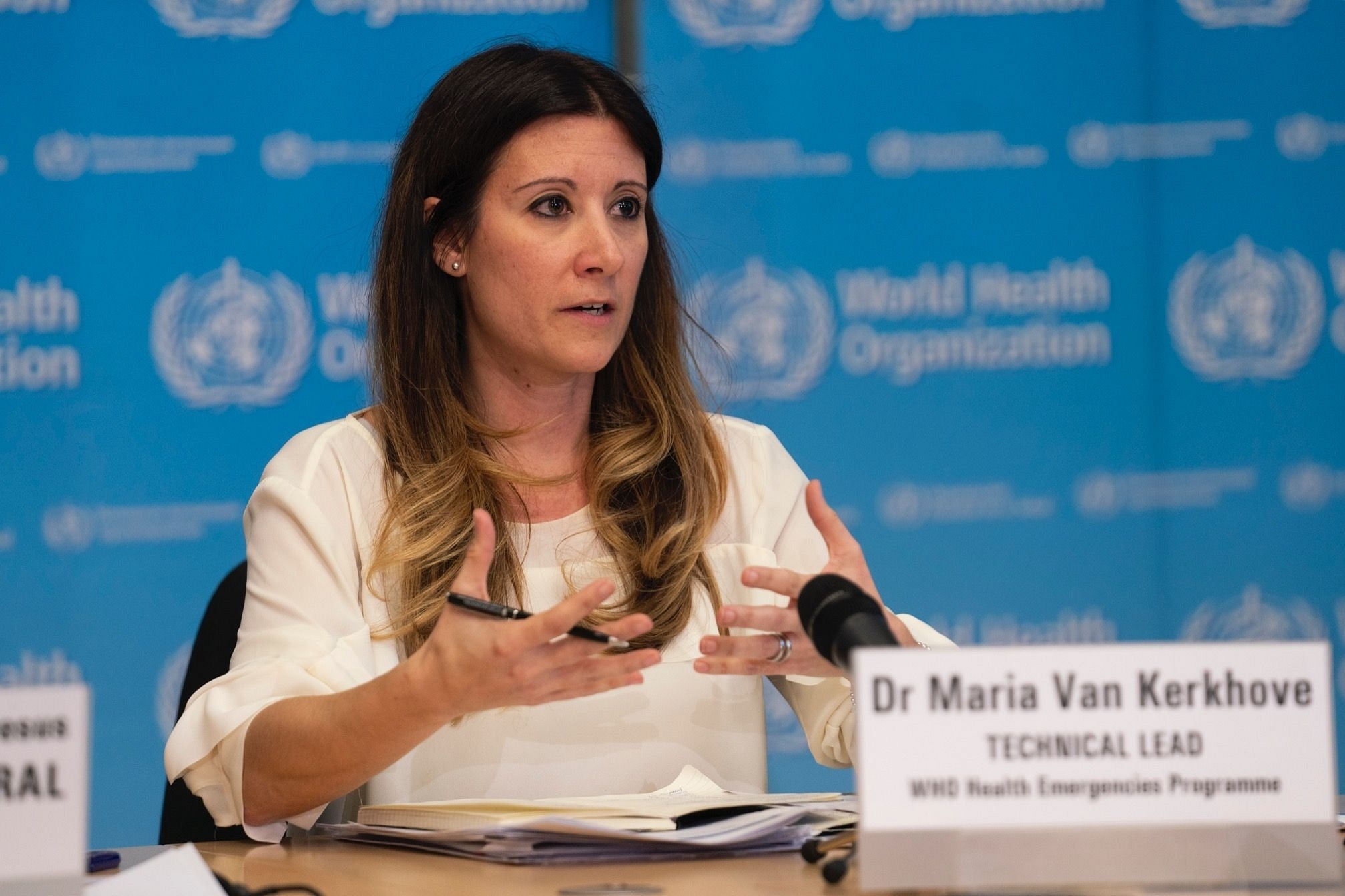News Brief
Closer Look: Did WHO Really Say That India's Covid Variant “MAY BE ABLE TO EVADE VACCINES”?
- What WHO said, what Indian media reported, and what the truth was.

Maria Van Kerkhove of the WHO (Twitter)
The double-mutant or the B.1.617 coronavirus variant that has emerged in India is now classified as the “variant of concern” by the World Health Organization.
The health body’s technical lead on Covid-19, Maria Van Kerkhove said during the organisation's press briefing: “We are classifying this [B.1.617] as a variant of concern at a global level”.
Additionally, she said: “There is some available information to suggest increased transmissibility", going on to add that there is also "some evidence for reduced neutralisation".
An Indian journalist shared the news on Twitter in the following manner.
She wrote on Twitter: “WHO classifies triple-mutant #Covid variant from India as global health threat. Preliminary studies show the variant can spread more easily than the original virus and it may be able to evade vaccines, Maria Van Kerkhove, the @WHO technical lead for #Covid19.”
For one, Kerkhove talked about the double mutant virus or B.1.617, not the triple mutant which is known as B.1.618, which was found in West Bengal.
It is the B.1.617 variant has become predominant across India and has been found in other countries also.
The double mutant of the virus was first identified in Maharashtra in December 2020.
According to an April article by the Hindustan Times, Dr Saumitra Das, director, National Institute of Biomedical Genomics, which is one of the 10 laboratories in India’s consortium on Sars-CoV-2 genome sequencing (INSACOG) said: “The B1.618 variant has plateaued at about 25 per cent of the total mutations reported from West Bengal.”
“B1.617 has become predominant. Across the country, there are some districts in states such as Maharashtra where the prevalence of the variant in as many as 80 per cent samples,” Dr Das added.
As per a Nature article, the double mutant or B.1.617 variant has spread to about 40 nations, including the United Kingdom, Fiji, the United States and Singapore.
It also said that B.1.617 has overtaken B.1.618 in West Bengal, has become the leading coronavirus variant in many states and has been increasing rapidly in Delhi.
Sujeet Singh, director of the National Centre for Disease Control, based in New Delhi, told journalists on 5 May said: “In some states, the surge can be tied to 617.”
Now to the point of B.1.617 being able to evade vaccines.
While earlier in the briefing Kerkhove spoke about a non-peer-reviewed study which suggested "reduced neutralisation" of B.1.617, later in the meet the WHO expert clearly stated that “we do not have anything to suggest that our diagnostics or therapeutics and our vaccines do not work”.
It should be understood that both of India's vaccines, Serum Institute of India’s (SII) Covishield and Bharat Biotech’s Covaxin have shown efficacy against the double mutant variant (see here and here).
In light of that, if any institution or person is making claims to the contrary, the burden proof of lies with them.
Support Swarajya's 50 Ground Reports Project & Sponsor A Story
Every general election Swarajya does a 50 ground reports project.
Aimed only at serious readers and those who appreciate the nuances of political undercurrents, the project provides a sense of India's electoral landscape. As you know, these reports are produced after considerable investment of travel, time and effort on the ground.
This time too we've kicked off the project in style and have covered over 30 constituencies already. If you're someone who appreciates such work and have enjoyed our coverage please consider sponsoring a ground report for just Rs 2999 to Rs 19,999 - it goes a long way in helping us produce more quality reportage.
You can also back this project by becoming a subscriber for as little as Rs 999 - so do click on this links and choose a plan that suits you and back us.
Click below to contribute.
Latest